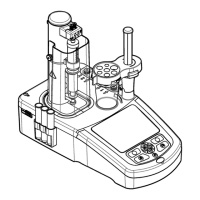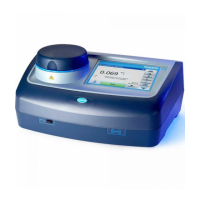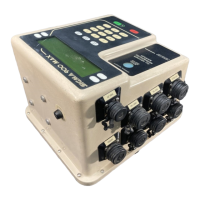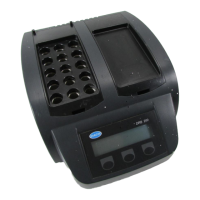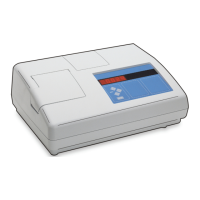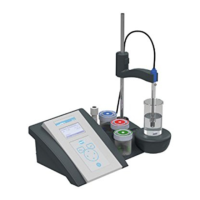Amperometric Titration Theory
Amperometric Titration Theory
50081_Titration.fm Page 147
1.1.3.2 Sample Spike
In a back titration (Figure 2), the sample solution is spiked with a measured volume of
standard reductant solution (e.g., phenylarsine oxide or sodium thiosulfate). This fixes
the chlorine concentration, allowing the sample to be stored for later analysis. The
chlorine concentration is derived from the difference between the amounts of reductant
originally added to the sample (N
Reductant Spike
V
Reductant Spike
) and that remaining after
reacting with the Chlorine in the sample (N
Titrant
V
Titrant
). The amount of unreacted
reductant is determined by titration with a standard iodine solution.
Figure 2 Total Chlorine Back Titration
1.2 Errors and Interferences
1.2.1 Overview
According to Standard Methods, “the amperometric method is the method of choice
because it is not subject to interference from color, turbidity, iron, manganese, or nitrite-
nitrogen”. However, several of these factors may affect the determination of chlorine
species when using amperometric methods. This is a brief review of common sources of
error encountered with actual samples.
The common chlorine methods will detect other disinfectants such as chlorine dioxide
(ClO
2
), ozone (O
3
), bromine (Br
2
), hydrogen peroxide (H
2
O
2
) and disinfectant by-
products such as chlorite and chlorate. In the free chlorine determinations, these oxidants
will be reduced to varying degrees by PAO or thiosulfate in the titration method. Each of
these oxidants will oxidize iodide to iodine, interfering in the total chlorine
determination.
1.2.2 Deposition on Electrode Surfaces
The AutoCAT 9000 is designed with self-cleaning platinum electrodes. Occasionally, it
may be necessary to perform the embedded clean/condition procedure to maintain
optimal performance. Sharp amperometric titration end points require clean, well-
C
sample
N
Reductant Spike
V
Reductant Spike
N
Titrant
V
Titrant
–
V
Sample
---------------------------------------------------------------------------------------------------------------------------
35453 mg/equ wt. ×=
Titrant Volume (mL)
Current (µAmp)

